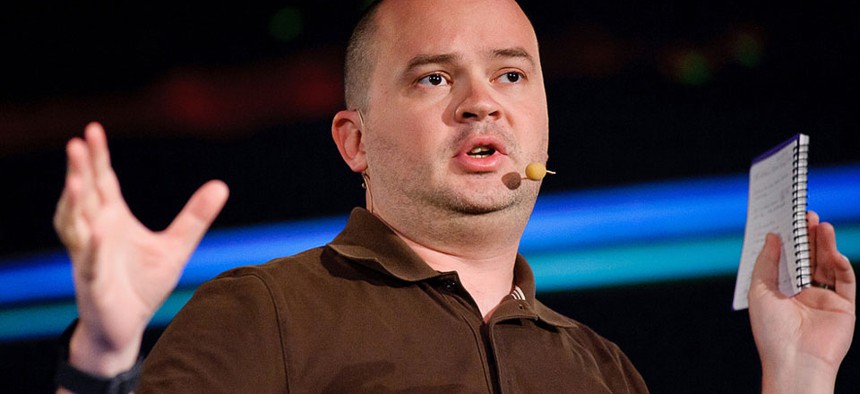Mikey Dickerson: Tech Recruiting Not as Busted As You Think

Flickr user O'Reilly Conferences
There’s no shortage of federal outsiders interested in solving public-sector problems, according to Mikey Dickerson.
This story has been updated to clarify the U.S. Digital Service's planned staffing levels.
You’ve heard it before: The federal government has a recruiting problem, especially when it comes to those in-demand technology positions at agencies.
But if you ask Mikey Dickerson, there’s no shortage of federal outsiders interested in solving public sector problems.
Unlike the Facebooks and Googles of the world, Dickerson said, federal agencies have important missions and unique challenges often not found in the private sector.
That can draw creative innovators to federal service.
In fact, the former Google engineer and newly named administrator for the U.S. Digital Services, is one of them.
Dickerson, who’s been in his current government role for two months, spoke Oct. 27 at the Executive Leadership Conference in Williamsburg, Virginia, to a room full of government and industry attendees.
The former Googler, who was first called into federal service by the Obama administration last fall to overhaul the ailing HealthCare.gov, said getting people to help fix the site “was the easiest recruitment job I ever had.”
Ten out of the 12 people he reached out to ended up signing up for the gig, he said.
Contrast that with Google, where despite its vast resources and allure, the competitive nature of Silicon Valley made it hard to tap the right talent, Dickerson said.
There are plenty of other agency projects aiming to solve difficult problems for which there is no Silicon Valley solution. Case in point: The disability claims backlog at the Department of Veterans Affairs, Dickerson said.
The Government Doesn't Have a Monopoly on Bureaucracy
Still, government is notorious for often arcane processes and byzantine rules and regulations. Take a topic like communication. In the private sectors, for example, there aren’t any Freedom of Information Act requests from journalists or congressional oversight.
And then there’s the glacially slow time it takes to do things in Washington.
But despite tech companies’ nimble reputation, the grass isn’t always greener.
As Dickerson pointed out, “the government doesn't have a monopoly on slow bureaucratic decision-making.”
Dickerson was tapped to fix the trouble-plagued HealthCare.gov and then named U.S. Digital Services administrator in mid-August. His office, which aims to be the “Navy Seals” of federal IT, anticipates being fully funded in 2015, Dickerson said.
Currently, the office is still waiting for much of its staff to onboard. About 750 would-be Digital Service staffers have applied to work at the office, Dickerson said. When fully operational, the administration envisions a staff size of about 20-25. Still, many of the potential new hires are stuck in a paperwork bottleneck, Dickerson said, which remains the office’s biggest hold-up for now.
NEXT STORY: Commercial customs app developed by CBP employee



